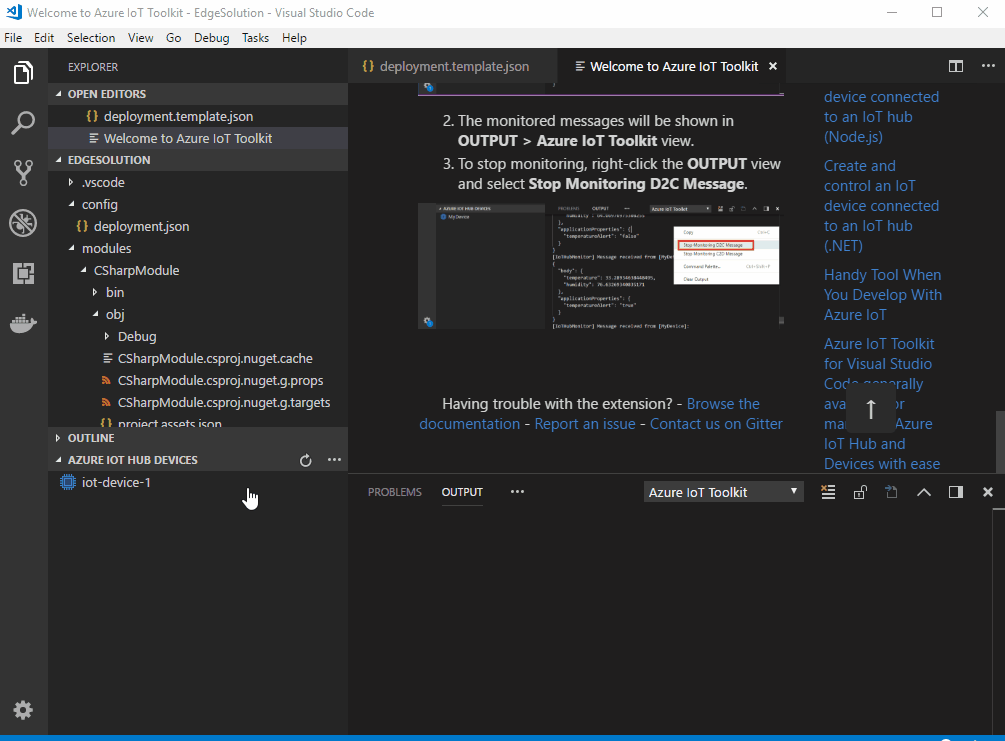Hello @Ankit Kumar , Thanks for posting this interesting question,
I hope the below information will help you with your query!
Sending message from LOGIC APP to Azure IOTHUB
- Create SAS token:Link Make sure the SAS token validity is long enough for your requirement!
- Get IoTHub+Device info: Link
- Get the IotHUB URI: example
https://**iothubname**.azure-devices.net/devices/**devicename**/messages/events?api-version=2016-02-03 - Design the LogicAPP: As shown in the below image, make use of 'HTTP' action.
- Send the Message\Telemetry to IoTHub: Start the logic App!
- Monitor the IoT hub for incoming messages or use Device Explorer!
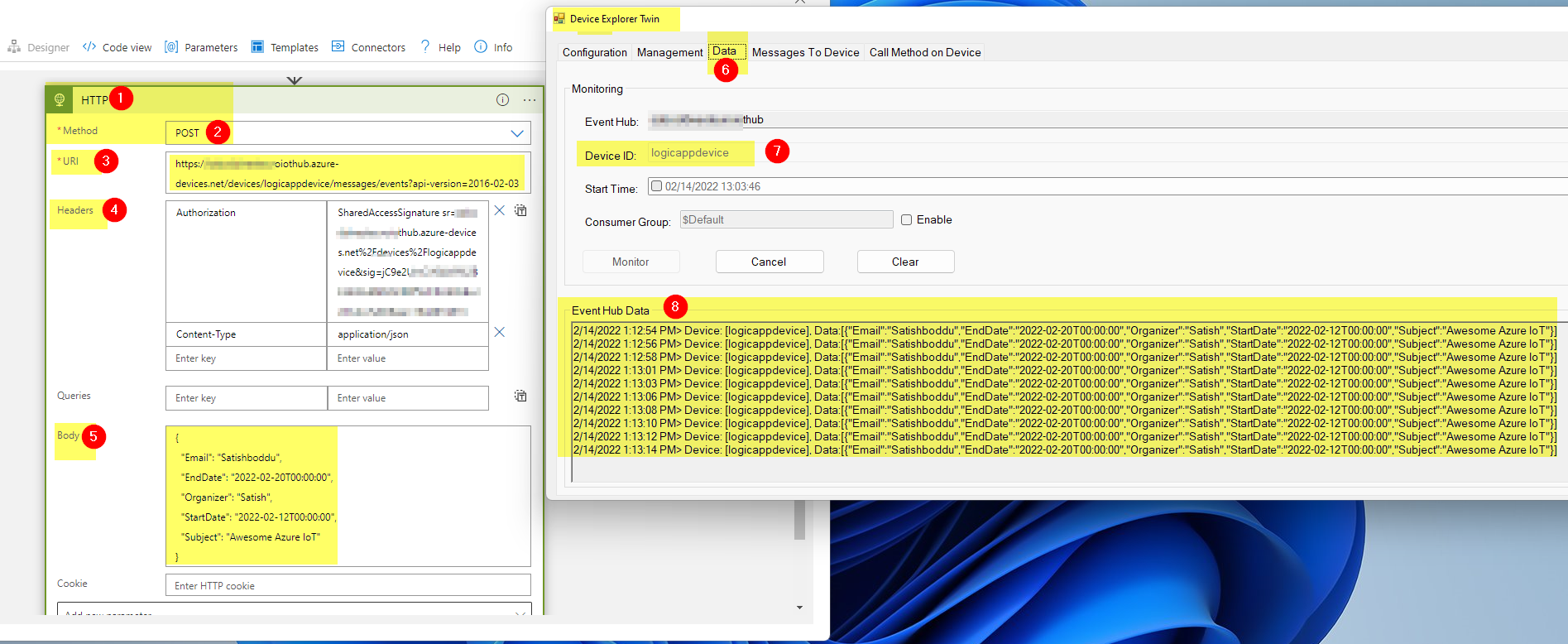
Option 2: If you want to quickly test your newly created\provisioned 'Azure IoTHub +IoT Edge Device' without any physical device, then please make use of the famous RaspberryPi Simulator portal. This portal simulator will send the messages to the IoTHub!!!! You can customize the code as well!!!
URL: https://azure-samples.github.io/raspberry-pi-web-simulator/
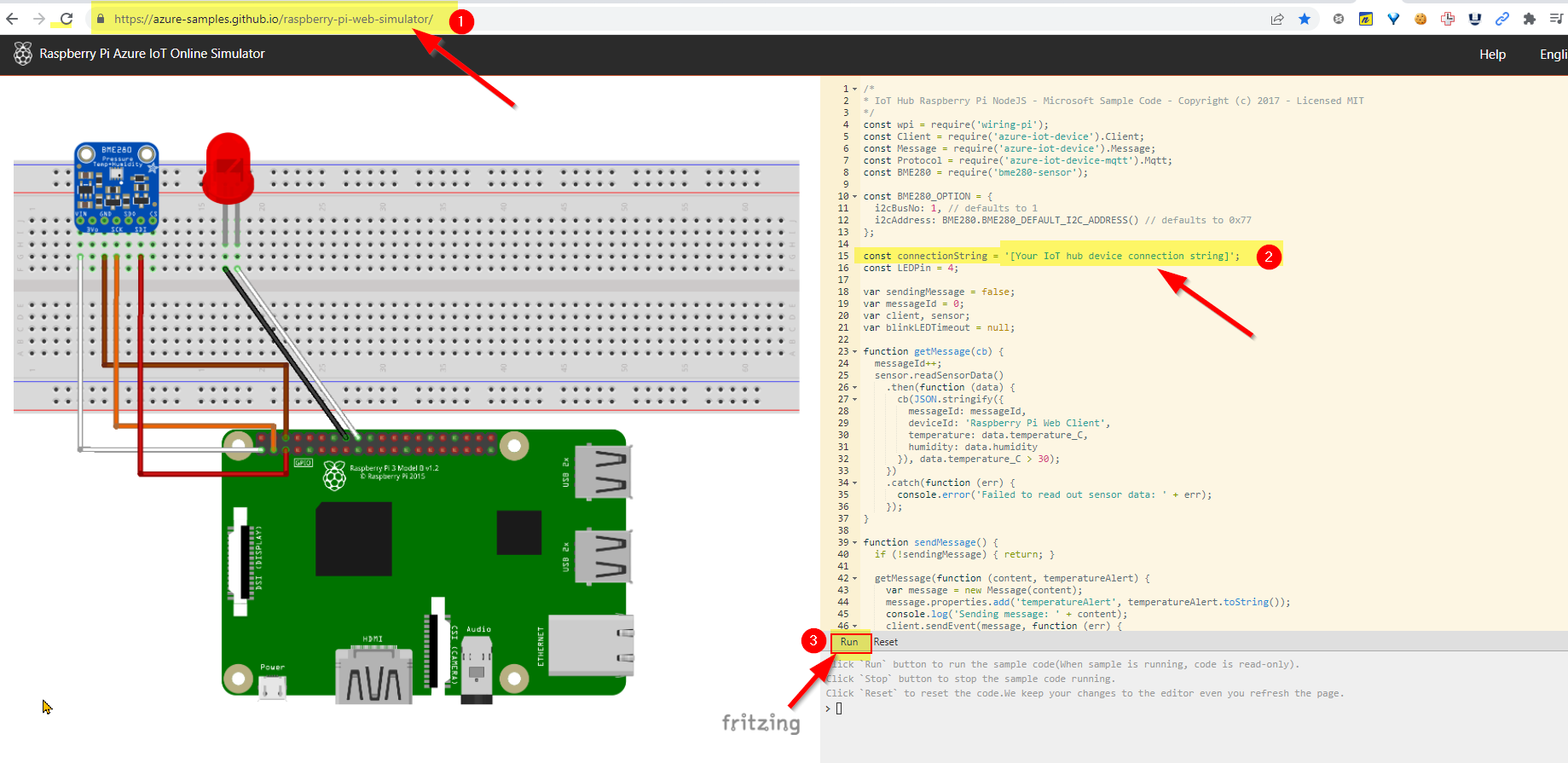
Scenario: Azure IoTHUb to LogicAPP : Receive messages to LogicApp
Make use of the 'HTTP' action shape for Get request.

Send a text message from your favorite Tool to Azure IoTHub targetting the device! I am using the Device Explorer tool, you may use the RaspberryPi Web Simulator!
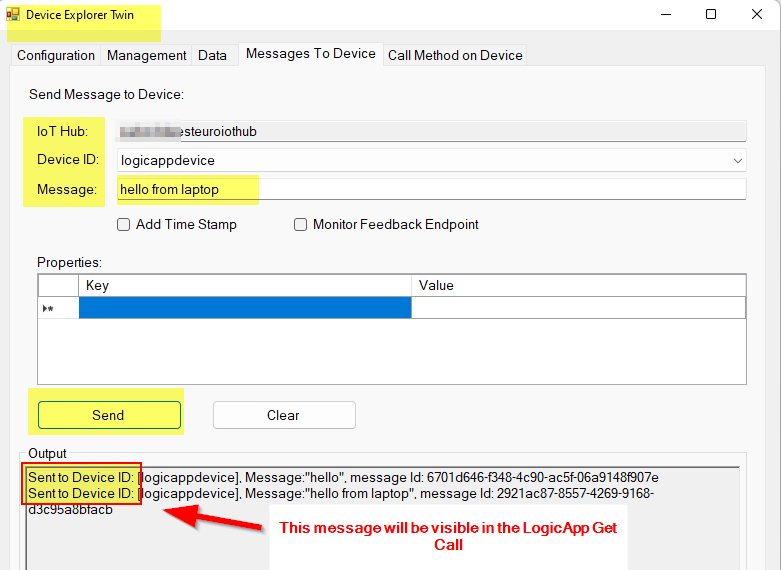
Now Run the LogicApp Get call to see the message!!!
Decode the base64 content string format to read the proper message!!!
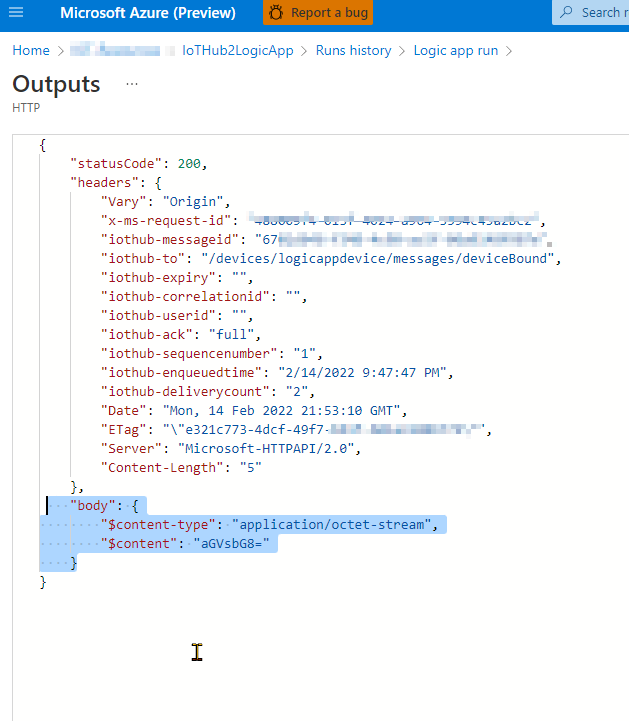
Please comment in the below section if you need further information in this regard. Happy to help!

